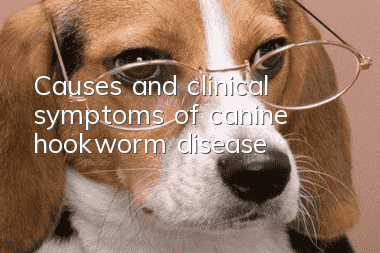Causes and clinical symptoms of canine hookworm disease

Causes of canine hookworm disease:
1. The common pathogens causing canine hookworm disease are Ancylostoma canis and Ancylostoma canis.
2. Canine hookworm eggs are excreted with the feces. Under suitable conditions, the larvae (rod-shaped larvae) hatch out in 12-30 hours. After about 1 week, they transform into infective larvae (with larvae). Sheath filaria).
3. Dogs are usually infected through the mouth, but can also be infected through the skin and oral mucosa.
4. When the larvae enter the host body through the mouth, they stay in the intestine, take off the sheath, and gradually develop into adult worms.
5. When the larvae invade through the skin, they burrow into peripheral blood vessels, migrate to the alveoli and trachea, enter the mouth with sputum, and develop into adult worms in the small intestine after swallowing.
6. Canine hookworm can also be infected through the placenta and colostrum.
Clinical symptoms of canine hookworm disease:
1. In severe infection, the mucous membrane will be pale and thin, and the coat will be thick, dull, and easy to fall off.
2. Loss of appetite, heterophilia, vomiting, digestive disorders, alternating episodes of diarrhea and constipation.
3. The feces is bloody or black, and in severe cases, it looks like tar and has a rancid smell.
4. If a large number of larvae invade through the skin, the skin will become inflamed and itchy, and some limbs will be swollen, followed by ulceration or erosion at the corners of the mouth.
5. Puppies within 3 weeks of age infected with hookworm in the womb or colostrum can cause severe anemia, coma and death.
- How to train Teddy dogs? Correct training techniques for you!
- Kennel Cough Symptoms and Treatment
- Causes and symptoms of sepsis in dogs
- Are Portuguese Water Dogs Smart?
- Neutering your dog is a big deal, here are a few things you should pay attention to:
- Why do dogs’ eyes become cloudy?
- How to train a Husky to learn to stand?
- DIY dog food-Homemade beef and pork liver dog food
- Sick dog care | How to care for a sick dog?
- 10 Mistaken Training Methods to Avoid When Your Puppy Enters a New Home



